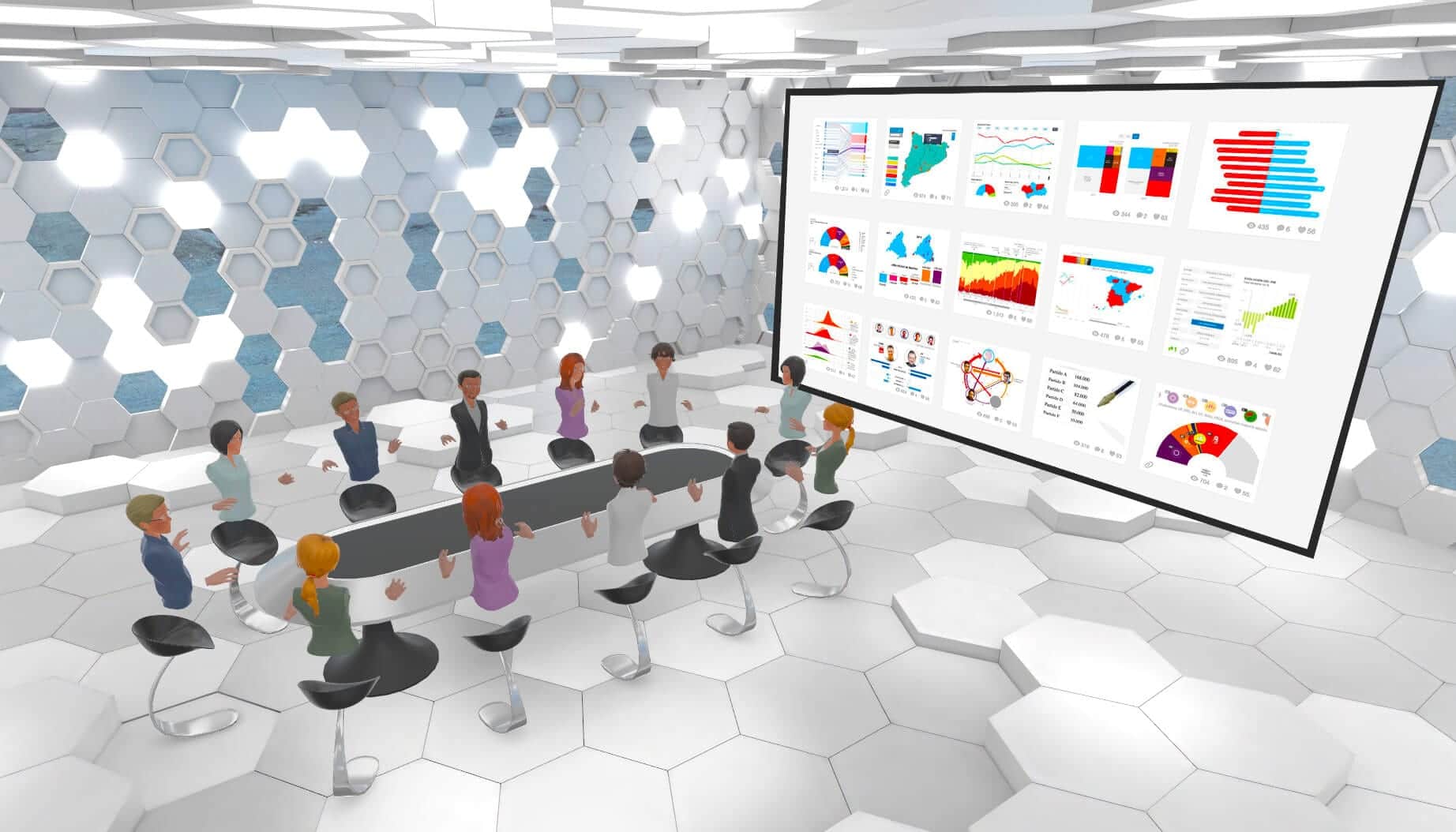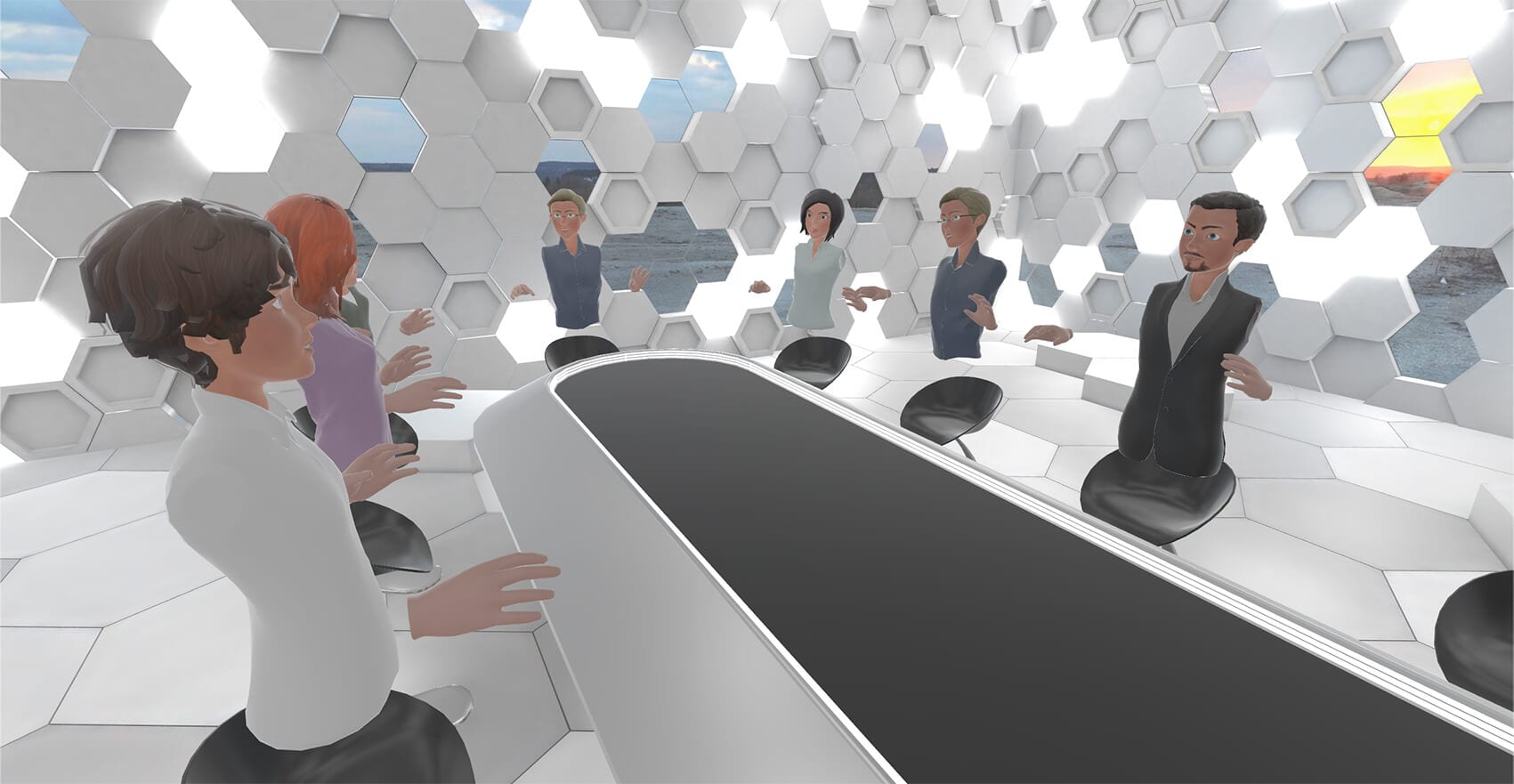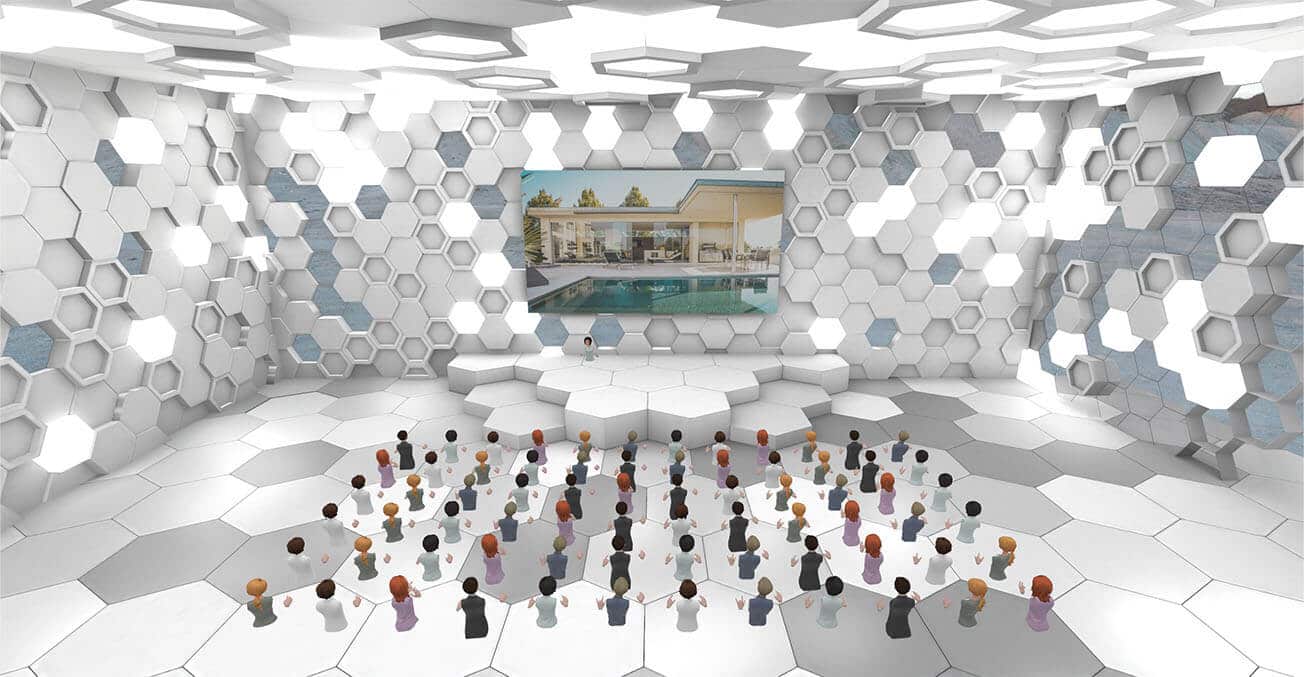Virtual reality meetings and conferences
Conferences in virtual reality will be the future trend when it comes to organizing meetings and business meetings.
This type of virtual meeting adds value to the already widespread videoconferencing.
Thanks to virtual reality, remote meetings gain in terms of interaction, non-verbal communication and immersion.
The widespread use of videoconferencing is a major boost for the business sector.
Thanks to the emergence of companies such as Skype, it was no longer necessary, for example, for board members to be in the same physical space for decision-making.
However, traditional videoconferencing has several drawbacks compared to a conventional meeting.
The fact that they do not share a common environment causes non-verbal communication to be almost non-existent.
As a result, these meetings are much more distant and less effective than regular meetings.
Thanks to virtual reality, these conferences can be conducted in a more natural and immersive way.
To conduct this type of meeting, participants create avatars.
These avatars share space in an environment created in virtual reality.
Within this simulated space, the avatars of the participants can interact with each other up to limits that webcams or cell phones do not allow.
Avatars can look at each other, directly, touch each other, perform gestures…
All non-verbal communication, practically non-existent in conventional videoconferencing, reaches limits close to those present in a physical meeting.
Virtual reality meetings have many benefits for companies.
The most obvious is that they allow users to see each other and interact, eliminating travel expenses.
With the small initial investment of virtual reality glasses, telematics conferences can be much more interactive and immersive than videoconferencing.
Communicate
with all or only some of the workers present in the virtual classroom.
Consult
all the information made available by users from your virtual “desktop
Show
to the whole group of users or to smaller groups of users, materials
multimedia in its different formats (pdf, video, 3D modeling, etc.) and to be able to interact with it (zoom, rotate, move, detail, etc.).
Interact
with the multimedia material shared during the meeting (zoom, rotate, move, detail, etc.)
Upload
materials prior to the virtual meeting.
Possibility of having a space where you can upload your own documentation.
For example, if you have downloaded one of the materials provided by the teacher, you may upload a
own version with your notes, and decide whether or not you want to share it with other users
Check
metrics and reporting on what is happening in the virtual environment thanks to a control panel where you can visualize the behavior of users in the classroom.
- Head movement
- Hand movements
- Heat map with the points where users direct their gaze to
- Time of connection to the environment to work
- Tone of voice
Point to
highlight or erase with a pointer the multimedia elements (pdf, video, 3D modeling, etc.) that you show to users
Virtual reality conferencing also makes it easier to follow up on projects that take place away from headquarters.
Thanks to virtual reality conferencing, it is possible to take a 360-degree photograph or video of, for example, a relocated factory, and consult its current situation almost in real time.
Participants in these meetings can also manipulate the virtual environment to provide much more detailed information than is possible in a videoconference.
Users can, for example, draw graphics in the virtual environment, which others can view and modify in real time.
Likewise, images, videos, 3D files, pdf….. can also be shared.
Only equipment compatible with virtual reality is required for these conferences.
With virtual reality goggles and a virtual reality controller, attendees have very high levels of interaction at their fingertips.
The fact that it is so easy to organize a meeting makes them happen more often and, therefore, improves internal communication.
Improving internal communication also improves the dynamics of decision making.
In addition, the fact of being able to support the arguments with virtual graphics, images or videos, makes the decisions taken more authoritative.
Virtual reality conferences have a promising future.
Although it is a developing sector, they have a number of advantages that make them much more interesting than traditional videoconferencing.
FAQs for Virtual Reality Meetings & Conferences
How do virtual reality meetings and conferences work?
- They are developed in a virtual environment built to simulate spaces, even recreating a corporate image; to navigate them, a customizable avatar representing each user is available.
How can I make a meeting with virtual reality?
- It requires a virtual space with meeting rooms in which boards, collaborative spaces, virtual chairs and tables are set up to give the sensation of presence, thanks to the virtual reality glasses.
- These rooms are entered by the avatars of the guests who can have body expressions almost the same as in real life.
- Virtual tours, 3D models, BigData viewers can also be integrated into meetings and combined with video and streaming services.
Advantages for companies of organizing a meeting with virtual reality
- Participants can be anywhere
- No travel required
- Savings on travel, accommodation and food costs
- They can take place as soon as they are called without waiting for the guests to travel to the meeting place.
- Usage and behavioral metrics can be derived from the more than 60 sensors in each pair of glasses.
How does virtual reality help the organization of conferences?
- The speaker can participate without having to allocate an extensive travel agenda.
- Costs can be less than half the cost of a physical event
- The construction or rental of the stage is avoided, as well as the waste of these elements of short use.
- Content, visitors and speakers from all over the world can be integrated.
- Travel costs and conflicting agendas are avoided.
5
We have a space in the cloud that can be rented for periods, customized and reserved exclusively for the user.




